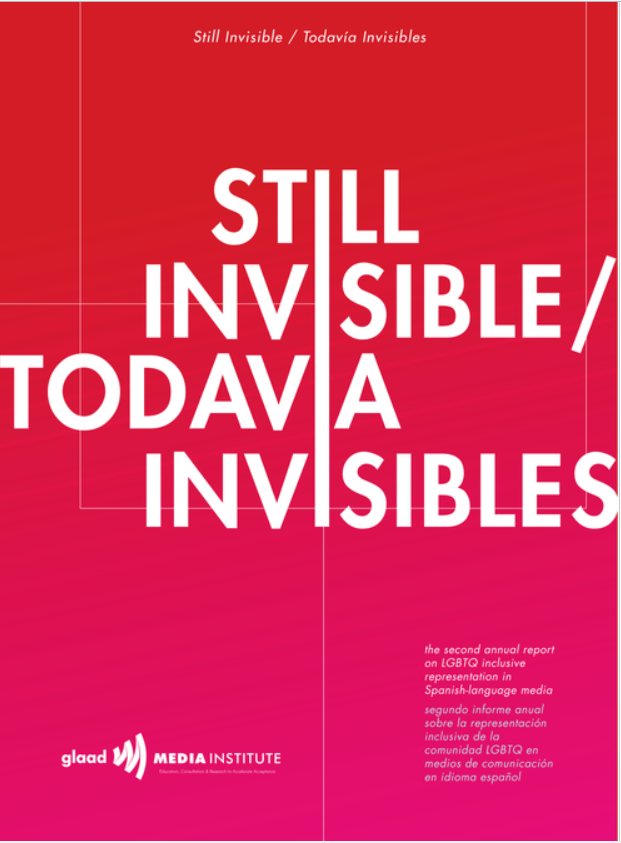Below are some of the findings from this report:
- Of the 698 characters on scripted primetime series, there were 19 LGBTQ characters across the three networks.
- The overall percentage of LGBTQ characters on scripted primetime series was 3%.
- Thirteen of the 19 (68%) LGBTQ characters were gay men, 3 of them were (16%) lesbian women, and 2 of them (11%) were bisexual women.
- No bisexual men were represented across the networks.
- Additionally, there was 1 straight transgender woman (7%), no transgender men were represented in primetime series.
- Additionally, one of the LGBTQ characters talked about being of indigenous descent (According to the International Work Group on Indigenous Affairs, there are approximately 40,000,000 people in Latin America and the Caribbean that belong to the over 600 identified indigenous peoples in the region.)
- In addition, of the 19 LGBTQ characters across the three networks, 1 was presented with a disability.
Abajo algunas de las conclusiones del informe:
- De los 698 personajes en series con guion, 19 eran LGBTQ.
- El porcentaje de personajes LGBTQ en las novelas durante la hora estelar es 3%.
- Trece de estos 19 (68%) personajes LGBTQ que aparecieron en las tres cadenas de televisión, fueron hombres gays, 3 eran mujeres lesbianas (16%), y 2 fueron mujeres bisexuales (11%).
- Ningún hombre bisexual fue representado en estas series en hora estelar.
- Adicionalmente, hubo una mujer transgénero heterosexual. Ningún hombre transgénero fue representado en los programas que salieron en la hora estelar.
- Adicionalmente, uno de los personaje LGBTQ hablo acerca de ser indígena (Según el Grupo Laboral Internacional de Asuntos Indígenas, hay aproximadamente 40.000.000 de personas en Latinoamérica y el Caribe que pertenecen a los más de 600 pueblos indígenas de la región).
- Adicionalmente, de estos 19 personajes LGBTQ en las tres cadenas de televisión 1 fue representado teniendo alguna discapacidad.
GLAAD’s second Spanish-language media report illustrates that, despite the opportunities that come from more original productions, competition from popular streaming services, and increasing cultural push from audiences to see more of their world reflected in scripted television, producers have failed to pay attention to their audiences and expand the inclusive representation that Latinx audiences seek in both English and Spanish.
El segundo informe sobre medios de comunicación en idioma español de GLAAD ilustra que, a pesar de las oportunidades que provienen de producciones más originales, la competencia con los populares servicios de streaming y la creciente demanda cultural del público de ver un mayor reflejo de su mundo en los programas de televisión con guion, los productores no les están prestando atención a sus telespectadores ni han aumentado la representación inclusiva que el público latinx busca en contenidos en idioma inglés y español.













